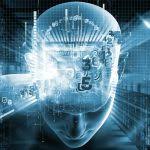Love Art and Stories of A.I.
With advancements in artificial intelligence (A.I.) we are confronting the possibility of A.I. not only creating art but potentially providing companionship in a manner once thought exclusive to human emotion.
The Nature of Love: Human versus Machine
Let’s start with love. For countless generations, love has been considered a profound human experience, characterized by deep emotional connection, vulnerability, and a sense of belonging. Its complexities range from the romantic to the platonic, parental, and self-love. Though psychologists and scientists have endeavored to quantify love from brain chemistry to behavioral patterns the essence of love remains elusive and deeply subjective.
Enter A.I. As advanced algorithms learn from interactions and data, we are witnessing a burgeoning capability for machines to simulate companionship. A.I. can gather data on an individual’s preferences, behaviors, and emotional responses. Virtual companions like Replika and others offer interactions that mimic the nuances of human conversation and often provide emotional support for users. However, the question lingers: Can A.I. truly understand love in the way that humans do? Or does it simply replicate behaviors associated with love programmed responses that mimic affection without genuine feeling?
In essence, while A.I. can provide companionship that feels emotionally fulfilling, it operates on a fundamentally different premise than human relationships. A.I. lacks consciousness and genuine emotional capacity; hence, its “love” is a simulation, devoid of the authentic emotional depth that characterizes human experience.
Art: A Canvas for Understanding A.I.’s Role
Moving to the realm of art, we grapple with similar philosophical quandaries. Art has always been a reflection of human experience, a medium to express thoughts, emotions, and cultural narratives. It encompasses a wide array of forms, from painting and music to literature and performance. Art is subjective, defined not merely by technique or aesthetic appeal but by its ability to evoke emotion, provoke thought, and resonate with its audience.
With the advent of A.I. in the creative process, we are shifting our conception of artistry. Algorithms can generate paintings, compose music, and even write poetry all in ways that can be surprisingly compelling. Systems like OpenAI’s DALL-E can create striking visual representations from text prompts, while A.I. models like AIVA compose music that has garnered attention in various artistic circles.
Nevertheless, the question arises: Can A.I. be considered an artist? This question invokes discussions about originality, intention, and emotional connection. While A.I. can create works that elicit emotional responses, it does so through patterns and historical data, not through lived experiences or personal expression. A piece of art may evoke an emotional response, but if we strip away the artist’s intent and experience, can the work still hold the same value?
Bridging the Gap: A.I. as a Tool vs. an Artist
As we advance deeper into the realms of A.I. companionship and artistry, we must consider our definitions and expectations. A.I. can be a powerful tool that aids in the creative process, enhances human creativity, and helps individuals express feelings through artistic outlets. Yet, to declare A.I. as a genuine artist misconstrues the fundamental aspects that define artistry and emotional engagement.
As researchers progress toward a more scientific understanding of love and art, they confront the limitations of A.I. in replicating these uniquely human experiences. For instance, while A.I. can generate text or create a compelling image, that creation lacks the intrinsic human experiences the struggles, joys, hurts, and triumphs that inform human artistry and relationships.
The Future: Co-Creation with A.I.
Rather than viewing A.I. as competition or replacement, embracing it as a collaborator may offer a more enriching path forward. The intersection of human emotion and artificial intelligence could lead to unprecedented artistic innovation, enabling individuals to explore their emotional landscapes through new mediums and forms. Similarly, virtual companions could provide emotional support rather than compete with human connections, evolving into tools for understanding ourselves better.
In summary, as we grapple with the essence of love and the definition of art, let us recognize the beauty in the collaboration between humanity and artificial intelligence. While A.I. may never fully encapsulate love or art in the way humans experience them, it can serve as a mirror, reflecting our own complexities back to us, and inspiring profound new explorations of the human experience. The journey of understanding may continue it may be fraught with questions but isn’t that the beauty of being human?







